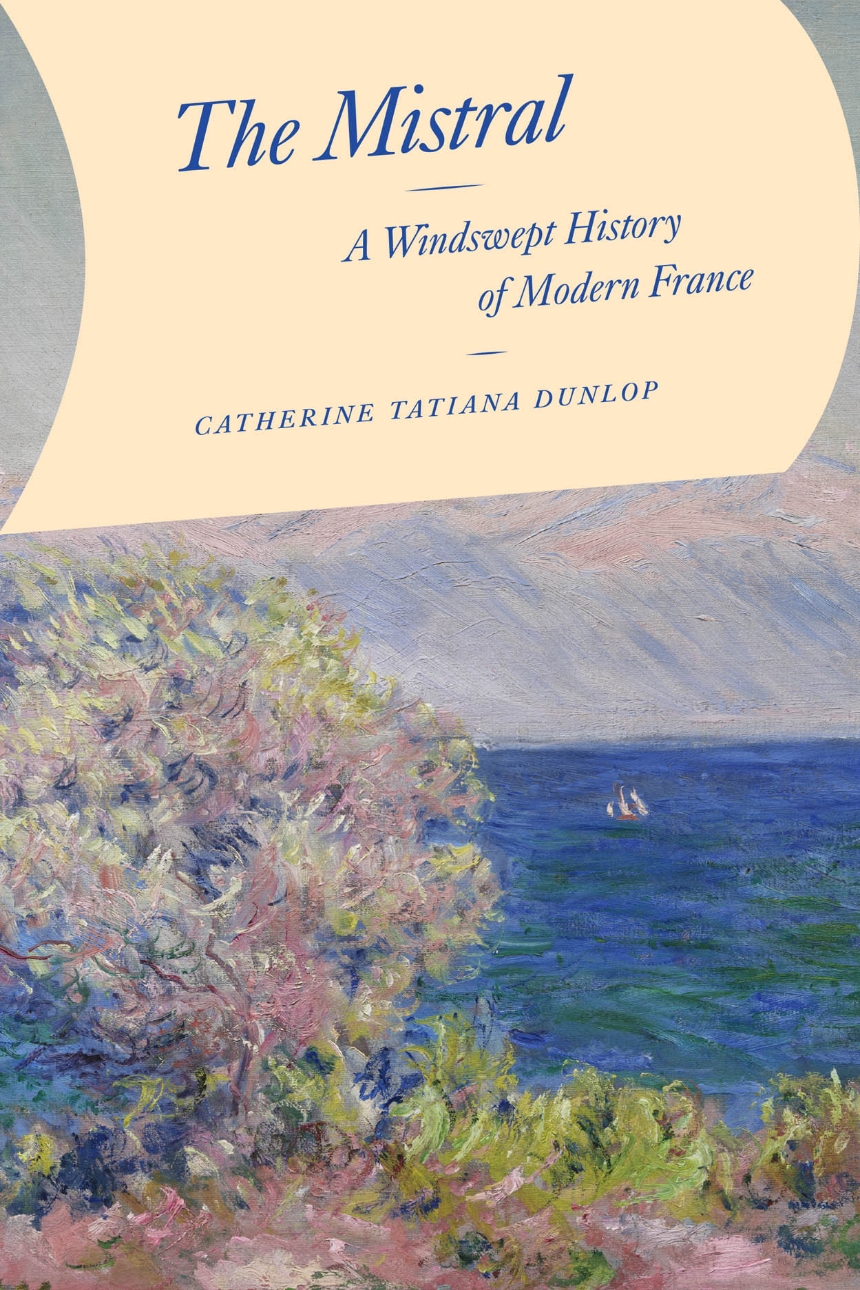The Mistral
A Windswept History of Modern France
An in-depth look at the hidden power of the mistral wind and its effect on modern French history.
Every year, the chilly mistral wind blows through the Rhône valley of southern France, across the Camargue wetlands, and into the Mediterranean Sea. Most forceful when winter turns to spring, the wind knocks over trees, sweeps trains off their tracks, and destroys crops. Yet the mistral turns the sky clear and blue, as it often appears in depictions of Provence. The legendary wind is central to the area’s regional identity and has inspired artists and writers near and far for centuries.
This force of nature is the focus of Catherine Dunlop’s The Mistral, a wonderfully written examination of the power of the mistral wind, and in particular, the ways it challenged central tenets of nineteenth-century European society: order, mastery, and predictability. As Dunlop shows, while the modernizing state sought liberation from environmental realities through scientific advances, land modification, and other technological solutions, the wind blew on, literally crushing attempts at control, and becoming increasingly integral to regional feelings of place and community.
Every year, the chilly mistral wind blows through the Rhône valley of southern France, across the Camargue wetlands, and into the Mediterranean Sea. Most forceful when winter turns to spring, the wind knocks over trees, sweeps trains off their tracks, and destroys crops. Yet the mistral turns the sky clear and blue, as it often appears in depictions of Provence. The legendary wind is central to the area’s regional identity and has inspired artists and writers near and far for centuries.
This force of nature is the focus of Catherine Dunlop’s The Mistral, a wonderfully written examination of the power of the mistral wind, and in particular, the ways it challenged central tenets of nineteenth-century European society: order, mastery, and predictability. As Dunlop shows, while the modernizing state sought liberation from environmental realities through scientific advances, land modification, and other technological solutions, the wind blew on, literally crushing attempts at control, and becoming increasingly integral to regional feelings of place and community.
192 pages | 8 color plates, 40 halftones | 6 x 9 | © 2024
Geography: Cultural and Historical Geography, Environmental Geography
History: Environmental History, European History
Reviews
Table of Contents
Introduction
1. Invisible Sculptor: The Mistral and the Formation of the Provençal Landscape
2. The Lion’s Roar: Mediterranean Journeys with the Mistral
3. Ascent into the Wind: The Mont Ventoux Observatory and the Rise of Atmospheric Science
4. Good Air, Bad Air: Public Health and the Cleansing Power of the Mistral
5. A Sense of Place: Painting the Mistral in the Open Air
Epilogue: Living with the Mistral in the Twenty-First Century
Acknowledgments
Notes
Bibliography
Index
1. Invisible Sculptor: The Mistral and the Formation of the Provençal Landscape
2. The Lion’s Roar: Mediterranean Journeys with the Mistral
3. Ascent into the Wind: The Mont Ventoux Observatory and the Rise of Atmospheric Science
4. Good Air, Bad Air: Public Health and the Cleansing Power of the Mistral
5. A Sense of Place: Painting the Mistral in the Open Air
Epilogue: Living with the Mistral in the Twenty-First Century
Acknowledgments
Notes
Bibliography
Index
